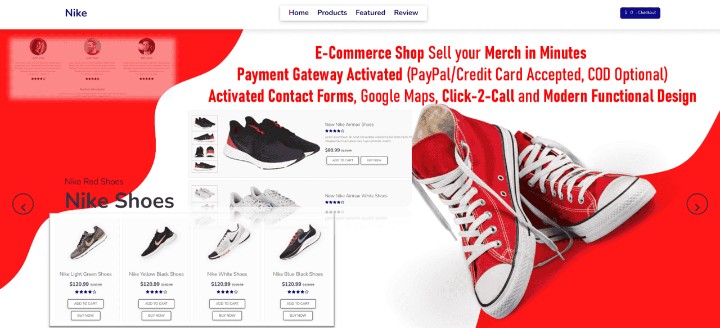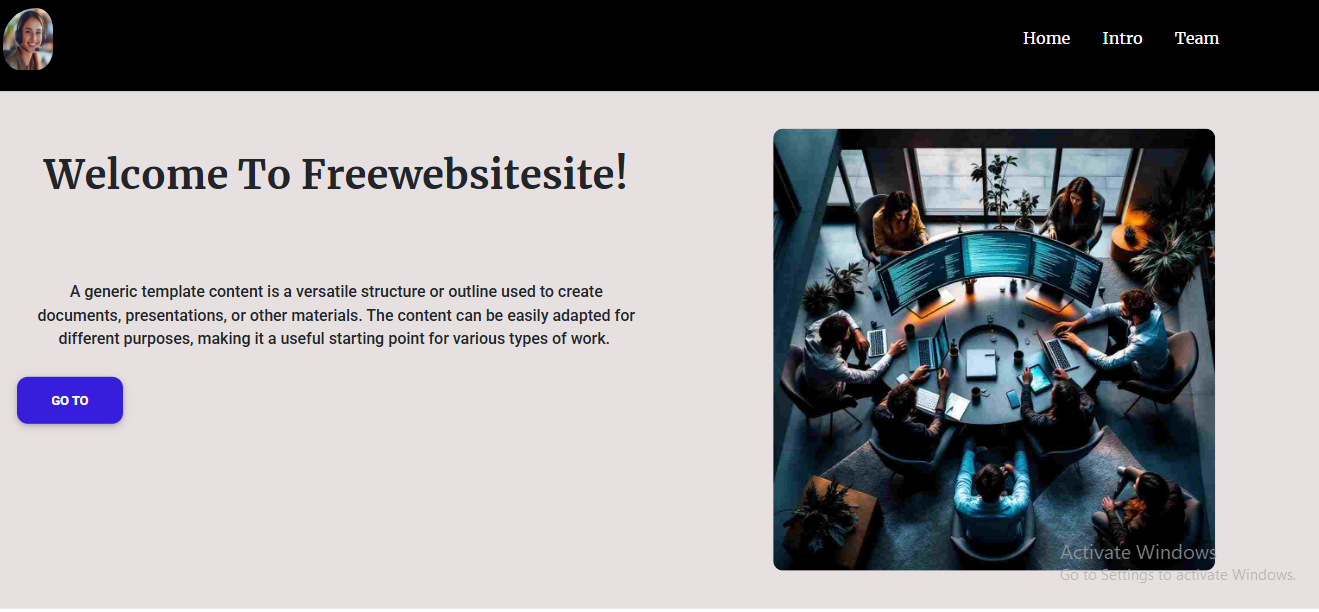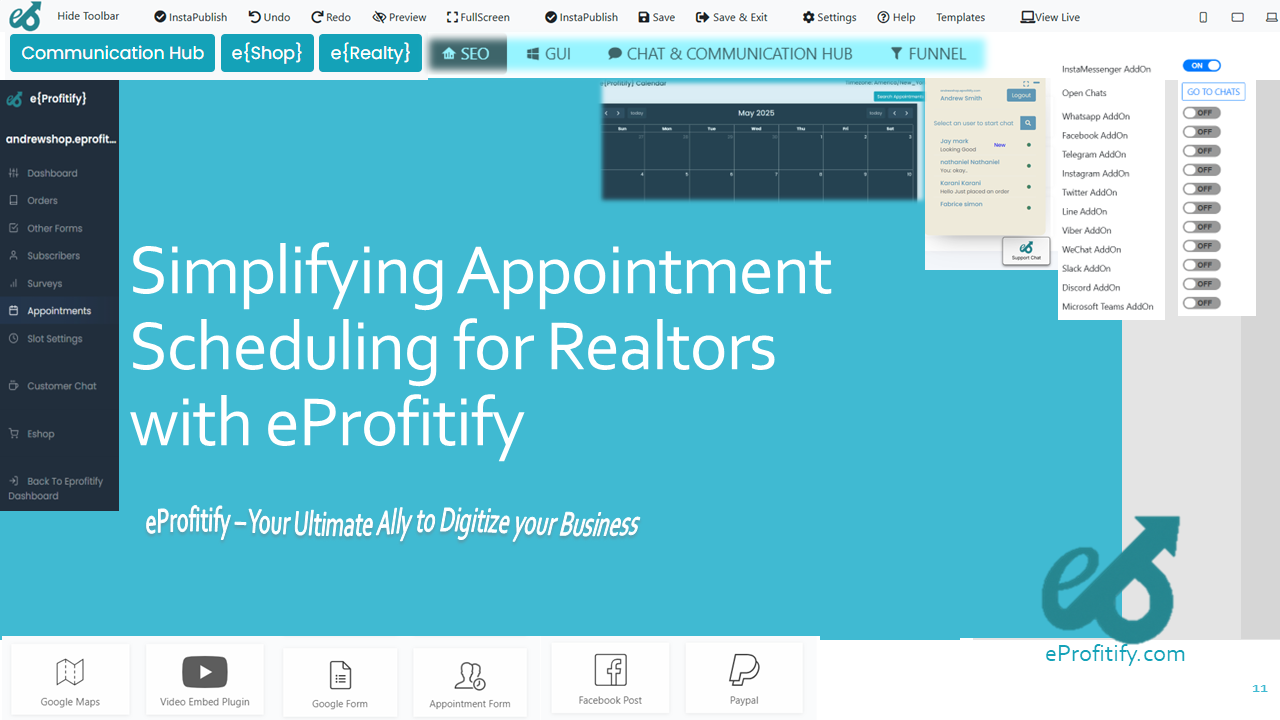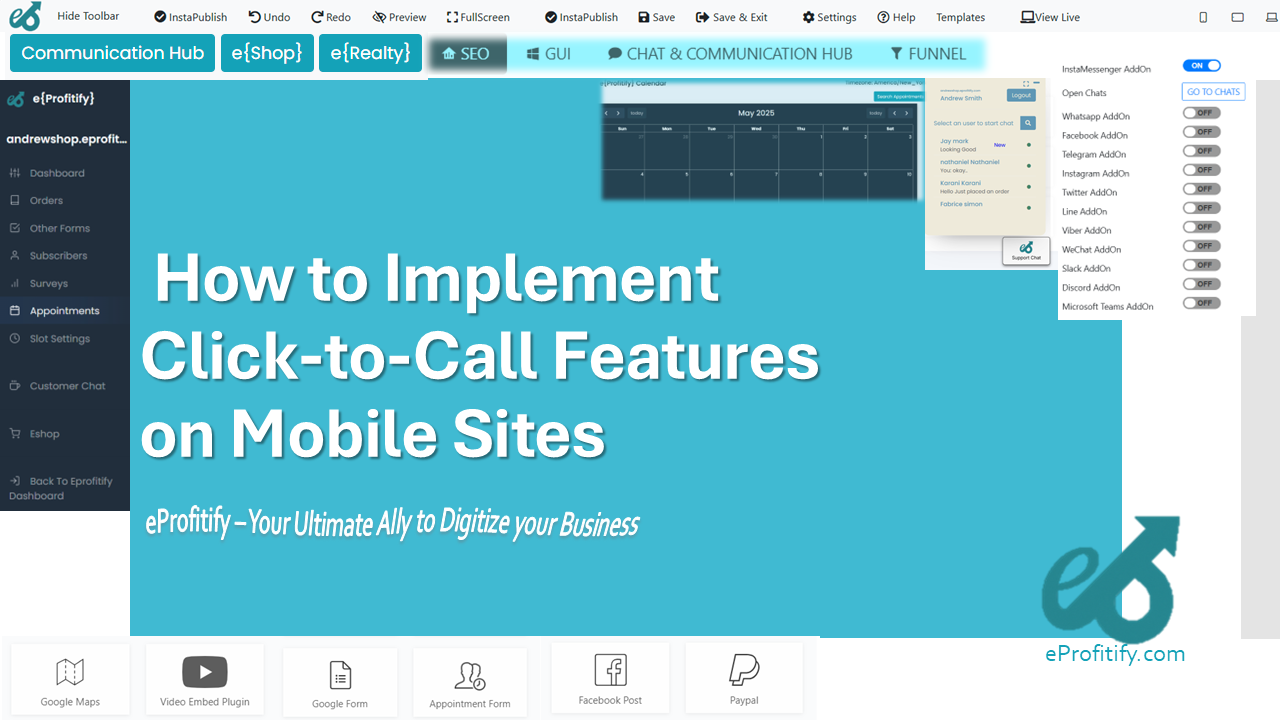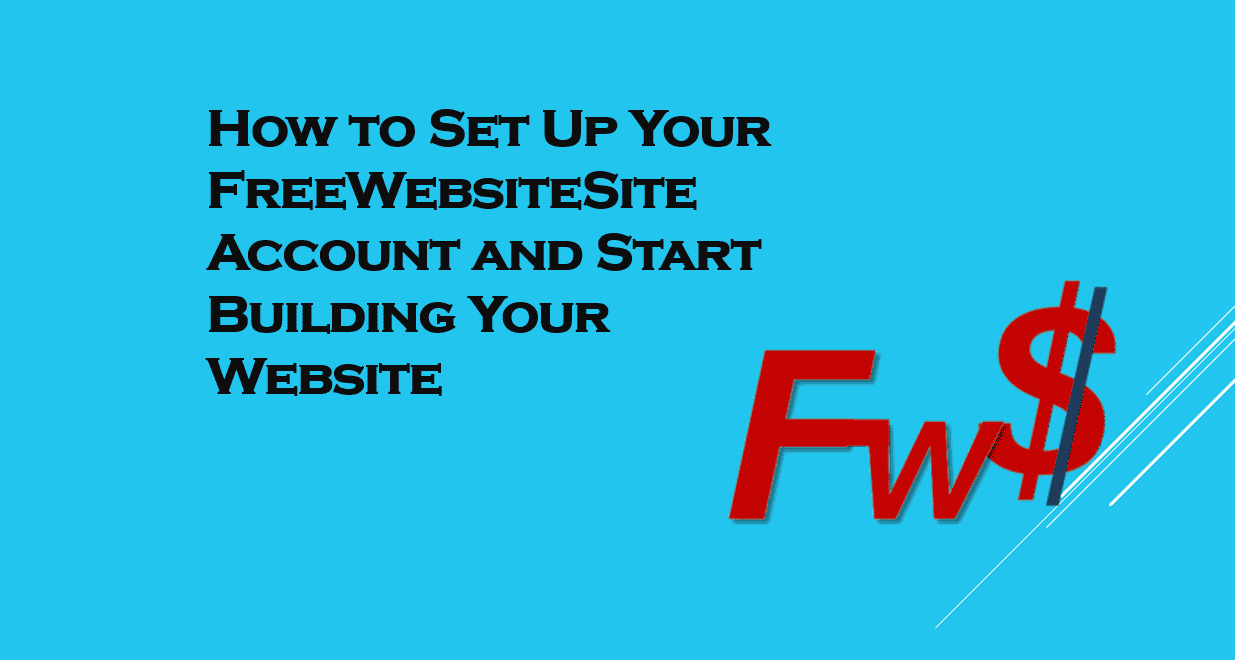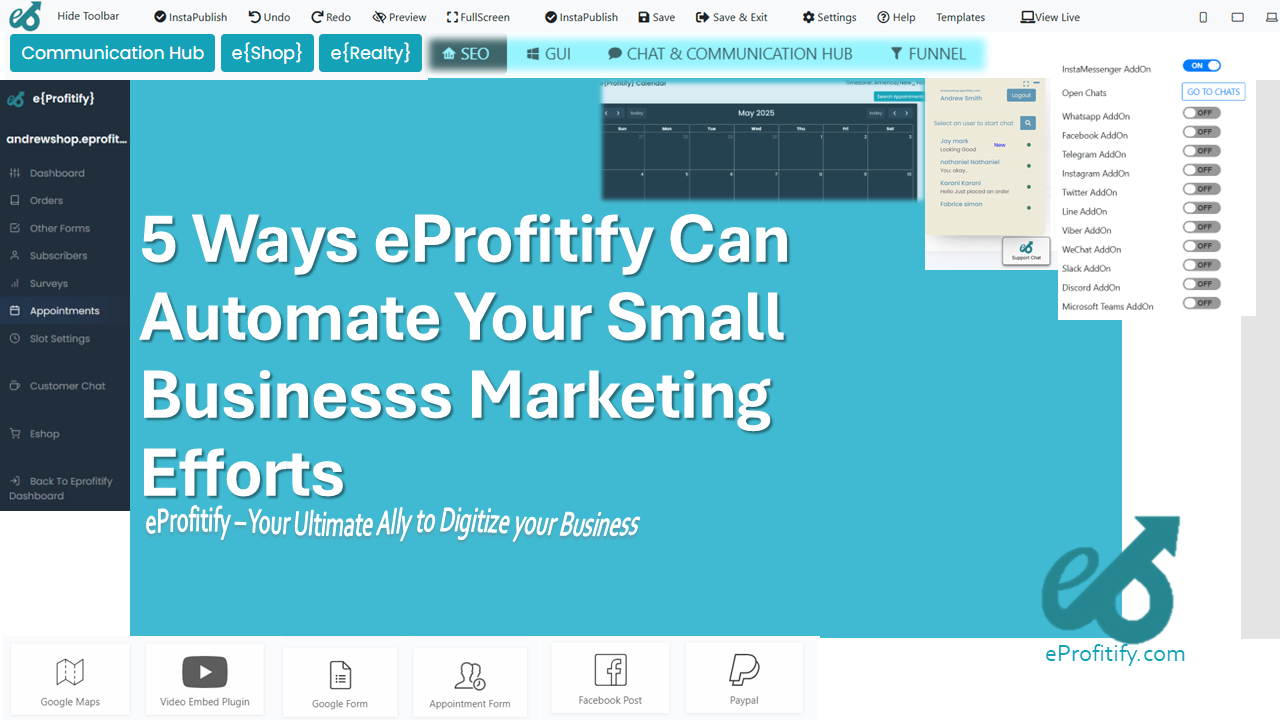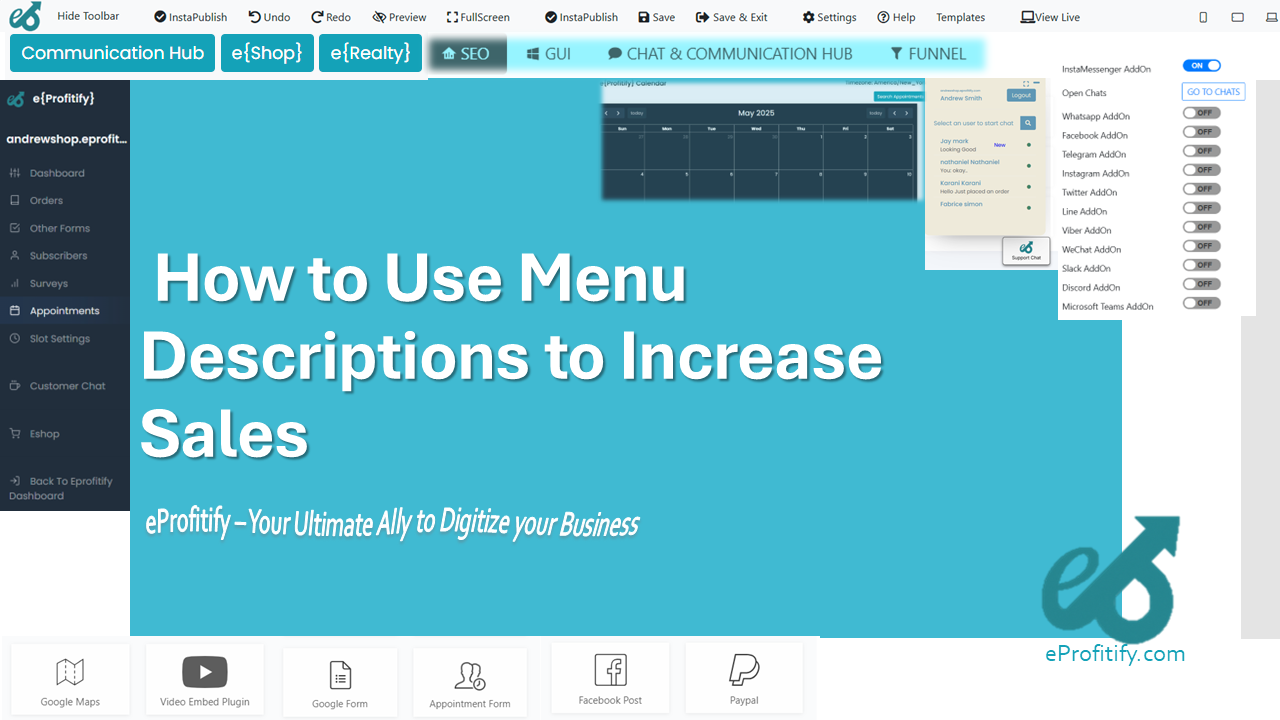Implementing Retargeting Ads to Re-engage Website Visitors
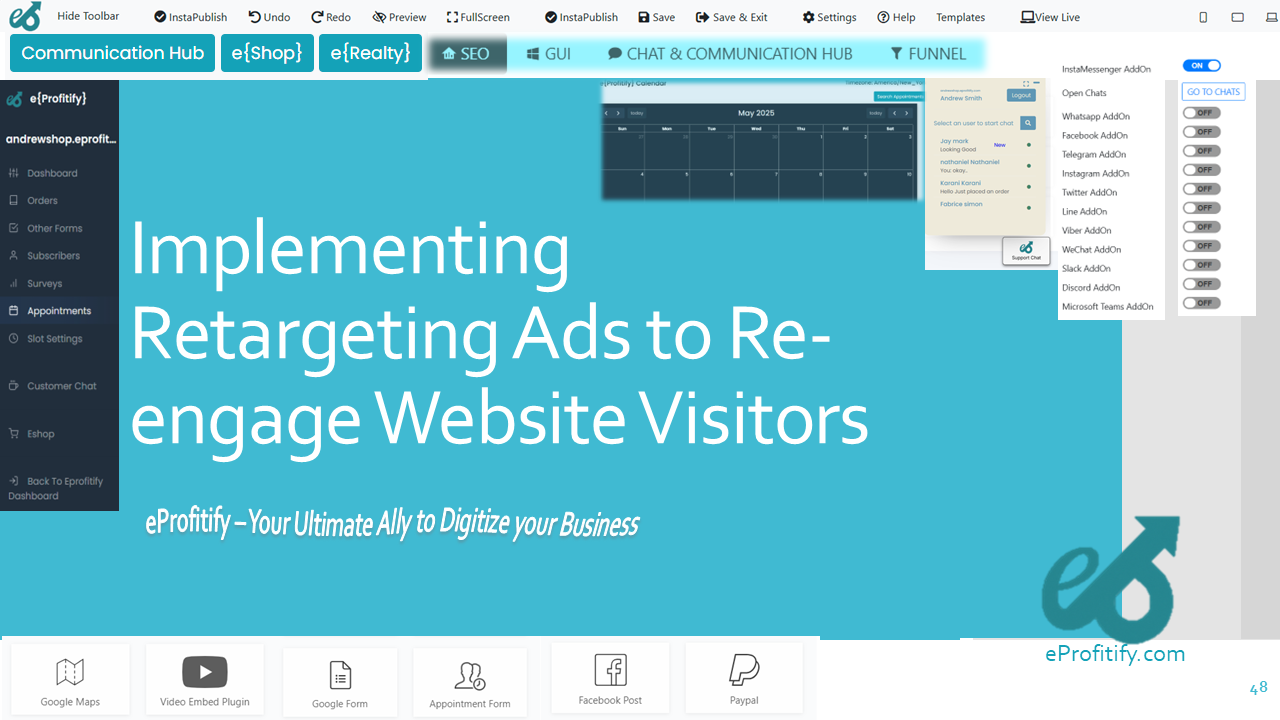
Implementing Retargeting Ads to Re-engage Website Visitors: Strategies, Statistics, and Tools
In today’s competitive digital landscape, businesses face a critical challenge: converting website visitors into customers. Studies show that 97% of first-time visitors leave a website without completing a purchase or desired action. Retargeting ads have emerged as a powerful solution to recapture these lost opportunities, offering brands a second chance to persuade potential customers. When executed strategically, retargeting campaigns can boost conversions, enhance brand recall, and maximize marketing ROI. This article explores the mechanics of retargeting, its benefits, best practices, and how platforms like eProfitify—a leading website publishing and management tool—integrate advanced features to streamline retargeting efforts.
Understanding Retargeting: The Basics
Retargeting (or remarketing) is a digital advertising technique that targets users who previously interacted with a brand’s website, app, or content but did not convert. By placing cookies or pixels on visitors’ browsers, businesses can display personalized ads on platforms like Google, Facebook, or Instagram to remind them of products or services they viewed.
Why Retargeting Works
- Familiarity Drives Action: Retargeting keeps brands top-of-mind. Research by CMOs Council reveals that retargeted customers are 70% more likely to convert than new visitors.
- Precision Targeting: Unlike broad campaigns, retargeting focuses on users already interested in your offerings. AdRoll reports that retargeting ads achieve a 10x higher click-through rate (CTR) compared to standard display ads.
- Cost Efficiency: Retargeting costs 50–70% less per lead than traditional prospecting, according to WordStream, making it ideal for small and mid-sized businesses.
Key Statistics Highlighting Retargeting Success
- Conversion Rates: The average conversion rate for retargeted visitors is 147% higher than untargeted campaigns (SaleCycle, 2023).
- Cart Abandonment: 75% of consumers abandon online carts, but retargeting recovers 15–20% of lost sales (Baymard Institute).
- ROI Boost: For every $1 spent on retargeting, businesses earn $4–12 in revenue (Invesp).
Best Practices for Implementing Retargeting Ads
To maximize retargeting effectiveness, follow these steps:
1. Segment Audiences for Personalized Campaigns
Not all visitors are the same. Segment audiences based on behavior:
- Cart abandoners: Target users who left items in their cart.
- Product page visitors: Highlight specific items they viewed.
- First-time vs. repeat visitors: Tailor messaging to their journey stage.
How eProfitify Helps: eProfitify’s built-in CRM system enables businesses to categorize visitors based on interactions, purchase history, and demographics. This segmentation ensures ads resonate with individual preferences.
2. Use Dynamic Retargeting Ads
Dynamic ads automatically display products or services users explored on your site. For example, a clothing retailer can show the exact dress a customer viewed. Dynamic retargeting increases conversions by 50% (Google).
eProfitify Integration: The platform’s ecommerce tools sync seamlessly with ad platforms, pulling real-time product data into dynamic ad templates.
3. Optimize Ad Frequency and Timing
Bombarding users with ads causes fatigue. Limit impressions to 3–5 times per week and set expiration dates for campaigns. A B2B brand might retarget users for 30 days, while a flash sale might use a 7-day window.
4. Leverage Cross-Device Retargeting
47% of shoppers use multiple devices before purchasing (Google). Ensure ads follow users across mobile, desktop, and tablets.
eProfitify Advantage: Its analytics dashboard tracks cross-device behavior, helping marketers refine ad delivery.
5. A/B Test Creatives and Messaging
Test headlines, images, and CTAs to identify high-performing variations. Brands that A/B test report 30–40% higher engagement rates.
Overcoming Retargeting Challenges
While retargeting is effective, common pitfalls include:
- Ad Blindness: Overexposure leads users to ignore ads. Rotate creatives and use frequency caps.
- Privacy Concerns: With cookie restrictions, diversify strategies. Collect first-party data via newsletters or loyalty programs.
eProfitify’s instant messaging tool can gather consent and preferences in real-time, reinforcing trust and compliance.
eProfitify: The All-in-One Platform for Retargeting Success
eProfitify isn’t just a website builder—it’s a holistic business management platform designed to amplify marketing efforts. Here’s how its features align with retargeting strategies:
- CRM Integration: Track customer interactions and segment audiences for hyper-personalized retargeting.
- Ecommerce Tools: Sync inventory with dynamic ads, automate abandoned cart emails, and manage promotions.
- Appointment Management: Retarget users who browsed services but didn’t book. Send reminders via email or SMS.
- Instant Messaging: Engage visitors proactively to reduce bounce rates. Follow up with retargeting ads if they leave.
- Analytics Dashboard: Measure campaign performance, ROI, and customer behavior in one place.
Conclusion
Retargeting ads are a necessity in a world where consumer attention is fleeting. By combining strategic segmentation, dynamic content, and cross-channel optimization, businesses can turn lost visitors into loyal customers. Platforms like eProfitify simplify this process by integrating retargeting workflows with CRM, ecommerce, and analytics tools, creating a seamless ecosystem for growth.
As statistics show, the ROI of retargeting speaks for itself—brands that leverage these tactics stay ahead in a crowded marketplace. Whether you’re recovering abandoned carts or nurturing leads, pairing smart retargeting with eProfitify’s robust toolkit ensures your marketing efforts deliver measurable, lasting results.
